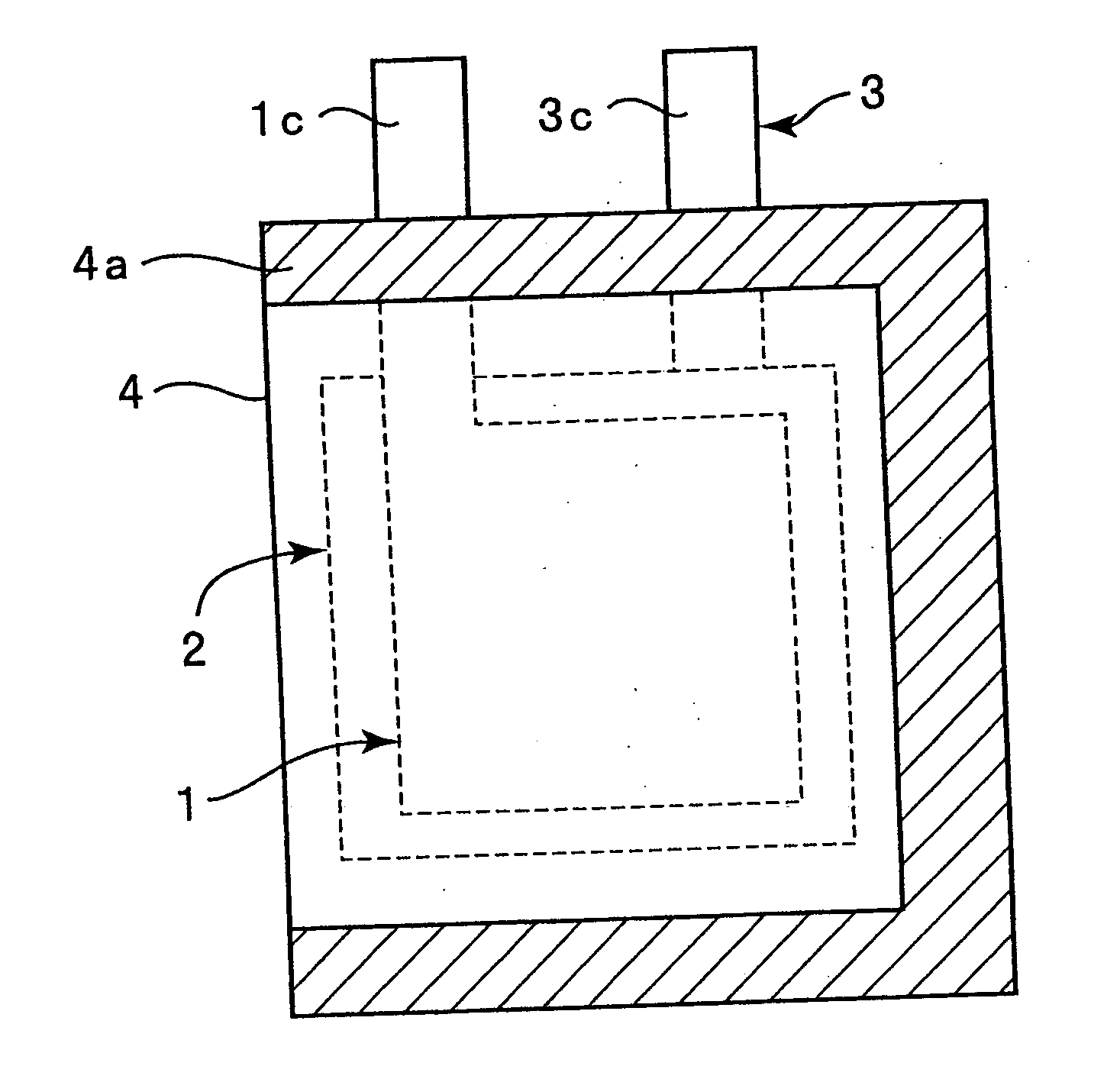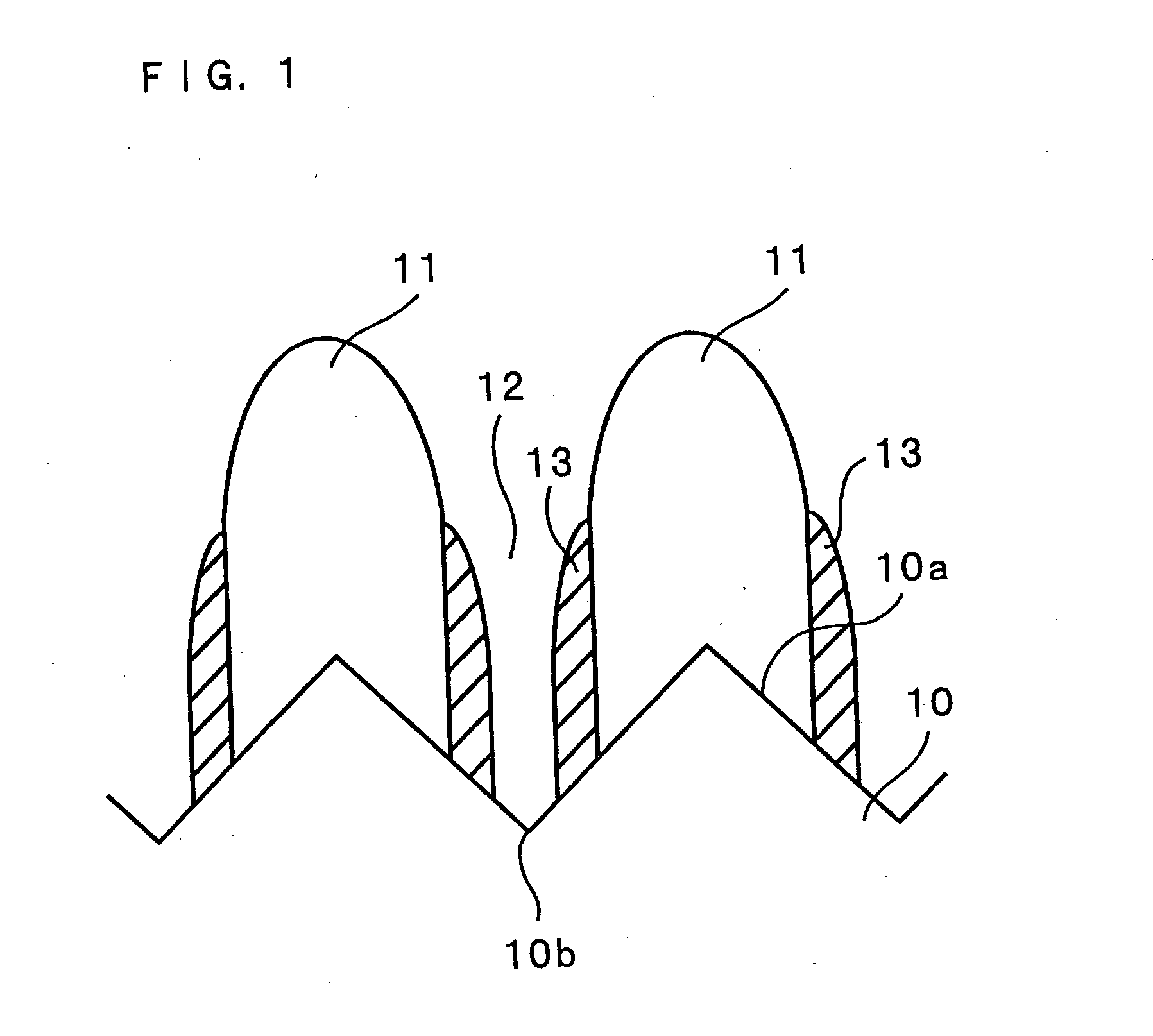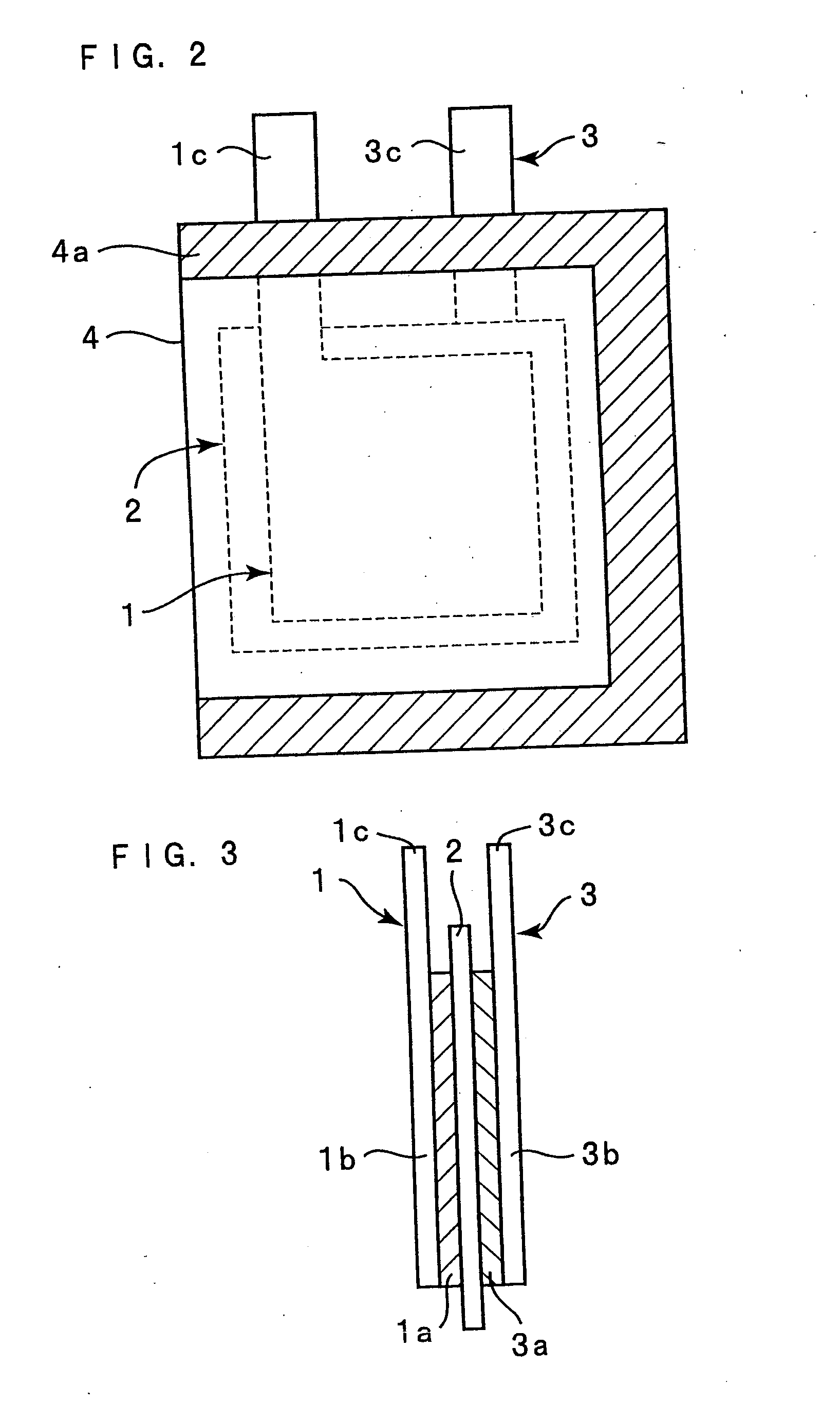Lithium secondary battery
a secondary battery and lithium battery technology, applied in the direction of non-aqueous electrolyte cells, cell components, sustainable manufacturing/processing, etc., can solve the problem of unsufficient investigation of the relationship between non-aqueous electrolyte and charge-discharge cycle characteristics, and achieve the effect of improving the charge-discharge cycle characteristics of the battery
- Summary
- Abstract
- Description
- Claims
- Application Information
AI Technical Summary
Benefits of technology
Problems solved by technology
Method used
Image
Examples
example 1
[0060] [Manufacture of Negative Electrode]
[0061] As a current collector, an electrolytic copper foil (thickness: 18 μm, and surface roughness Ra: 0.188 μm) was used. A silicon thin film was formed on the electrolytic copper foil by RF sputtering. Conditions for the sputtering are as follows: sputtering gas (Ar) flow rate: 100 sccm, substrate temperature: room temperature (not heated), reaction pressure: 0.133 Pa (1.0×10−3 Torr), and radio frequency power: 200 W. The silicon thin film was deposited to have a thickness of about 5 μm. The resultant silicon thin film was subjected to Raman spectroscopic analysis. As a result, a peak around 480 cm−1 was detected, while a peak around 520 cm−1 was not detected. It was accordingly found that the resultant silicon thin film was an amorphous silicon thin film.
[0062] The electrolytic copper foil on which the amorphous silicon thin film was formed was cut out into a size of 2.5 cm×2.5 cm and then dried at 100° C. in vacuum for 2 hours, to obta...
example 2
[0083] [Manufacture of Negative and Positive Electrodes]
[0084] A negative electrode and a positive electrode were manufactured in the same manner as in Example 1.
[0085] [Preparation of Electrolyte E]
[0086] Five parts by weight of ethyl difluoroacetate were mixed with 100 parts by weight of the electrolyte prepared by dissolving 1 mol / liter of LiPF6 in a mixed solvent containing ethylene carbonate and diethyl carbonate at a volume ratio of 3:7, to prepare an electrolyte E.
[0087] [Preparation of Electrolyte F]
[0088] Five parts by weight of ethyl trifluoroacetate were mixed with 100 parts by weight of the electrolyte prepared by dissolving 1 mol / liter of LiPF6 in a mixed solvent containing ethylene carbonate and diethyl carbonate at a volume ratio of 3:7, to prepare an electrolyte F.
[0089] [Manufacture of Battery]
[0090] A lithium secondary battery was manufactured in the same way in as Example 1 except that the electrolyte E or F was used.
[0091] [Measurement of Charge-Discharge Cyc...
PUM
 Login to View More
Login to View More Abstract
Description
Claims
Application Information
 Login to View More
Login to View More - R&D
- Intellectual Property
- Life Sciences
- Materials
- Tech Scout
- Unparalleled Data Quality
- Higher Quality Content
- 60% Fewer Hallucinations
Browse by: Latest US Patents, China's latest patents, Technical Efficacy Thesaurus, Application Domain, Technology Topic, Popular Technical Reports.
© 2025 PatSnap. All rights reserved.Legal|Privacy policy|Modern Slavery Act Transparency Statement|Sitemap|About US| Contact US: help@patsnap.com



